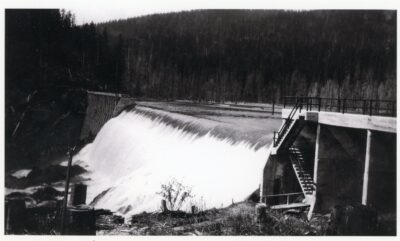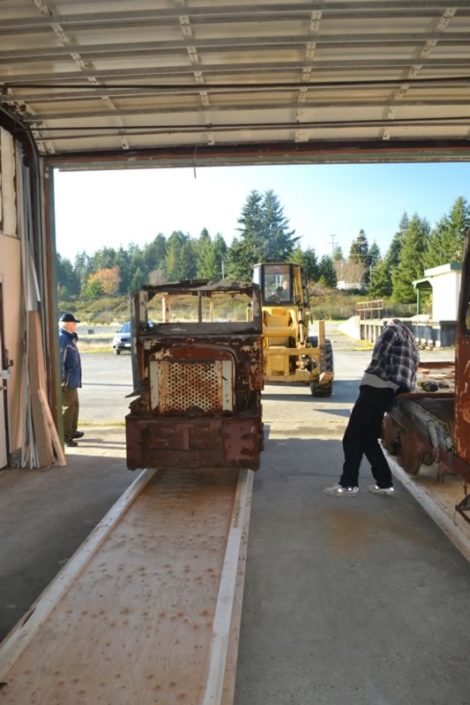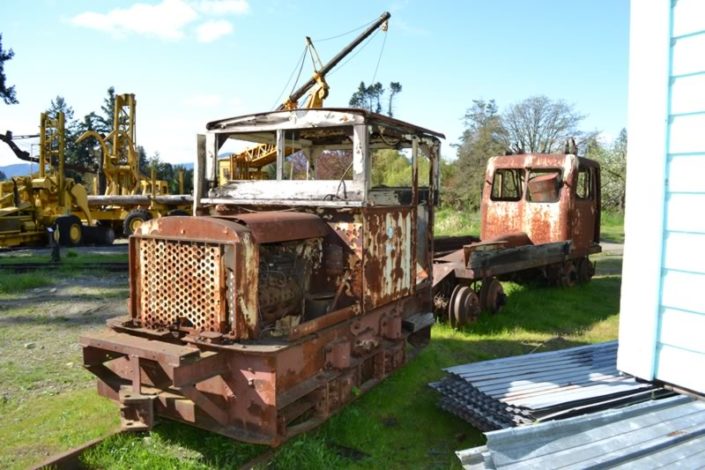2 ½ -ton 1928 Plymouth Model TL-2 Locomotive
THE RAILWAY AND ITS ENGINES
The Jordan River railway was built in 1909 by the Vancouver Island Power Company, a subsidiary of BC Electric, when construction began on a dam and powerhouse. It was around 9km in length and ran alongside a flume from the Forebay Reservoir to the Diversion Dam 1,150 feet above sea level. A narrow-gauge railway of 3ft, this type of railway was common for industrial enterprises of the area, as they were less costly to build than a standard track.
Various steam and gas locomotives and speeders served the railway until 1940 when the 1928 Plymouth gasoline locomotive with a 32 HP Le Roi Engine replaced other models.
This engine has a multiple speed gear system, for the locomotive to navigate mountainous terrain like the Jordan River hillside. It was replaced with a Ford Flathead engine likely around the late 1930-40s.
THE DAM
The Vancouver Island Power Company’s (later B.C. Hydro) hydro-electric plant opened September 10, 1911 on the beach near the mouth of the Jordan River, supplying power to Victoria and the lower Island area. It was a major project led by the Superintendent for the Company, the legendary D.I. Walker. From the artificial Forebay Reservoir, located 1,150 feet above the powerhouse, four penstocks carried rushing water down to the turbines. The Forebay Reservoir was linked to the engineering feats of the Diversion Dam and Reservoir, further up the river, through a wooden flume 8.5km in length, alongside of which ran the railway. The line, which ran all the way into Victoria, transported the power, supported by cedar poles.





